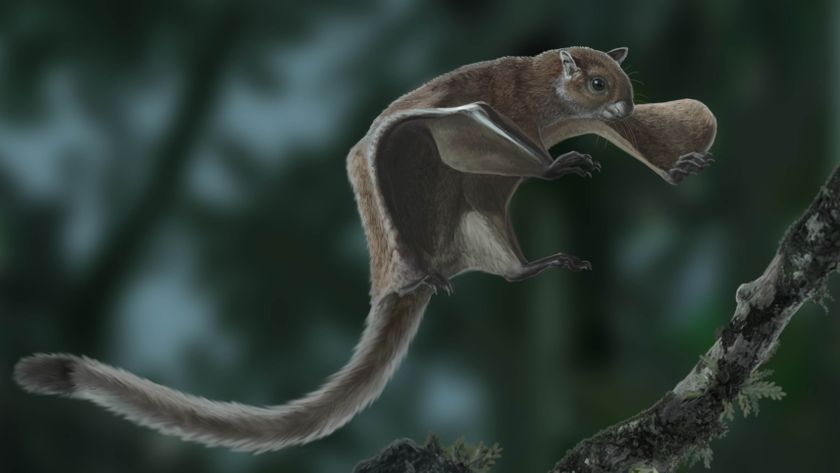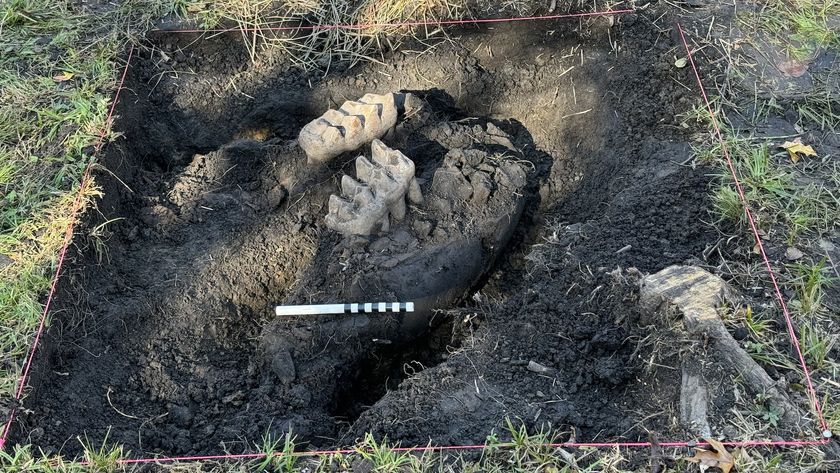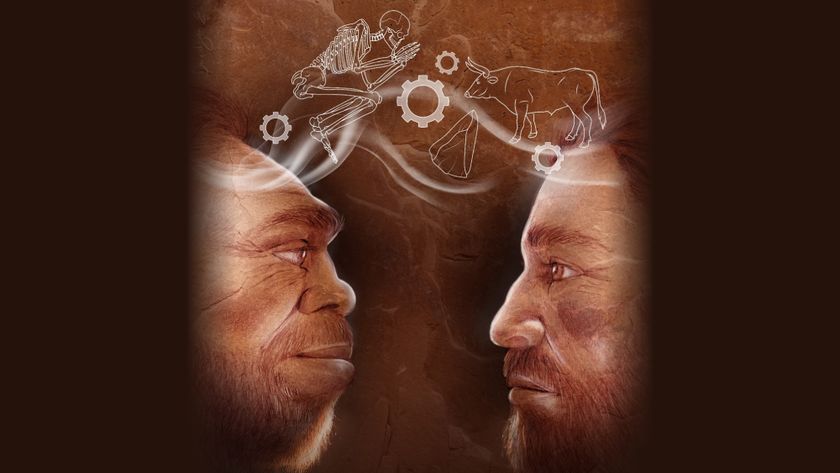3.7-Billion-Year-Old Rock May Hold Earth's Oldest Fossils
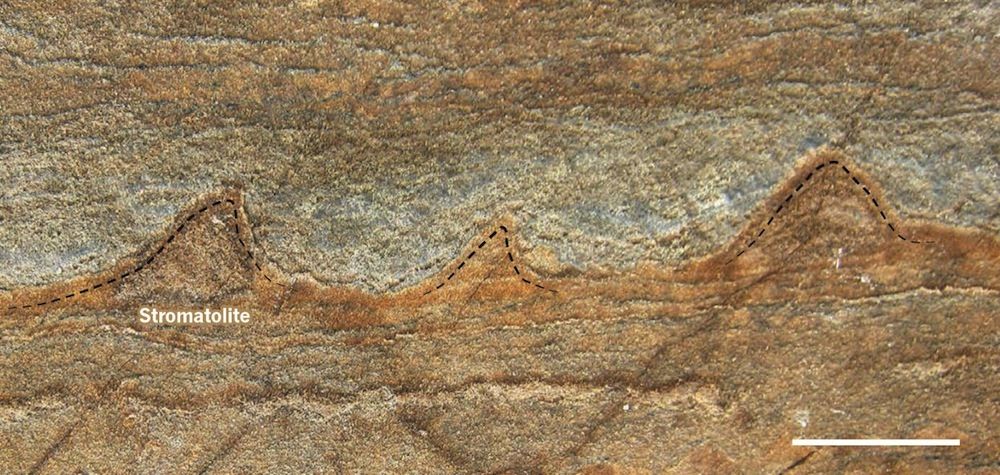
Tiny ripples of sediment on ancient seafloor, captured inside a 3.7-billion-year-old rock in Greenland, may be the oldest fossils of living organisms ever found on Earth, according to a new study.
The research, led by Allen Nutman, head of the School of Earth and Environmental Sciences at the University of Wollongong in Australia, described the discovery of what look like tiny waves, 0.4 to 1.5 inches (1 to 4 centimeters) high, frozen in a cross section of the surface of an outcrop of rock in the Isua Greenstone Belt in southwestern Greenland, a formation made up of what geologists regard as the oldest rocks on the Earth's surface.
The researchers said the ripples are the fossilized remains of cone-shaped stromatolites, layered mounds of sediment and carbonates that build up around colonies of microbes that grow on the floor of shallow seas or lakes. [7 Theories on the Origin of Life]
According to the scientists, the new discovery, detailed online today (Aug. 31) in the journal Nature, supports theories that life on Earth originated during the so-called Hadean eon more than 4 billion years ago, a period of intense volcanic activity when large meteorites and icy comets frequently bombarded Earth. This was also the time when the first bodies of water formed on the planet's surface.
The rock outcrop was found only after a series of warm summers in southwestern Greenland caused large patches of snow at the site to melt earlier than normal, revealing rocks that had not been examined by researchers since the Isua Greenstone Belt was first explored in the 1980s, Nutman told Live Science.
"Most of the rocks there are very deformed and modified by later mountain-building processes, but you do find just very tiny little areas that have survived with their original volcanic or sedimentary structures not destroyed," Nutman said. "But this is the first one of the surviving structures where we actually have stromatolites."
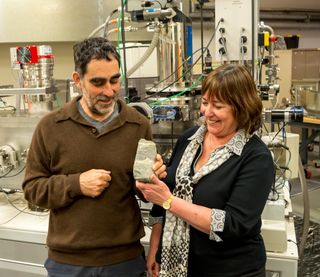
Under pressure
Remarkably, the structures were found in an outcrop of metamorphic rock that was once subject to intense underground heating and pressure, which distorted their original shapes and changed their chemical composition.
Sign up for the Live Science daily newsletter now
Get the world’s most fascinating discoveries delivered straight to your inbox.
"The overall features, such as the shape of the stromatolites, are preserved," Nutman said. "But some of the finer details of the very fine layering have certainly been erased — although, as we show in the paper, there are vestiges of that left."
Sediment structures that look like stromatolites can form without the involvement of microbial life, but the researchers said they examined the chemistry and minerals in the rocks and were able to establish that they contain the fossilized remains of a colony of ancient microbes.
The 3.7-billion-year-old structures described in the new study are about 220 million years older than the fossils previously regarded as the oldest known fossils on Earth. Those 3.5-billion-year-old stromatolites, found in sedimentary rocks in Western Australia, precipitated over billions of years without metamorphic heating.
Abigail Allwood, an astrobiologist at NASA's Jet Propulsion Laboratory in Pasadena, California, whose 2006 study about the Australian fossils established their biological origin, said the new study will likely face close scrutiny. [Photos: The World's 6 Most Famous Rocks]
"These kinds of discoveries always do [cause controversy], especially when they first come out, and in this case, it's particularly amazing because they were found in metamorphic rocks that have been significantly altered and transformed from their original characteristics," Allwood told Live Science.
Allwood reviewed the new study by Nutman and his colleagues for a separate opinion piece published today (Aug. 31) in the journal Nature. Allwood's 2006 study is cited in the new paper, but she did not contribute directly to the latest research.
"It's remarkable that they have found [the structures], and they've done a good job of analyzing what's there — but the alteration that the rocks have seen means that there's just a whole lot of stuff that you'd typically like to see to make such an extraordinary claim, that just isn't preserved," she said.
Life or nonlife?
Geochemist Balz Kamber, chair of geology and mineralogy at Trinity College Dublin in Ireland, has also studied the stromatolite fossils from Western Australia. He told Live Science that the new finds would no doubt face further scientific tests to assess the strength of the claims for a biological origin.
But he added that the new structures appear to be a far better prospect for evidence of ancient life than another set of fossils reported nearly two decades ago on Greenland's Akilia Island, which were later shown not to have a biological origin. [The 10 Strangest Places Where Life Is Found on Earth]
Kamber also said there can be little doubt that the conical structures identified in the new research are the result of sedimentation on the floor of a marine environment, regardless of whether they can be shown to have a biological origin. This means that the structures are not only evidence of standing bodies of water on the Earth's surface 3.7 billion years ago, but also bodies of land crossed by rivers that carried chemical solutes into the ancient oceans, he said.
Both Kamber and Allwood also said the new findings have implications for the field of astrobiology and the search for evidence of past life on other planets — particularly on Mars.
Kamber said these potential clues about the very early emergence of life on Earth in the Hadean period supports his own recent research, published earlier this year, about the prospects for life in the water-filled craters caused by meteorite and comet impacts on the early Earth.
"I think the enclosed impact basins at the tail end of the bombardment at 3.8 [billion] to 3.85 billion years ago would have made great places for life to emerge from," he said.
Allwood added that there is also clear evidence that, at the time the rocks at Isua were forming 3.7 billion years ago, conditions on Mars were similar to those on early Earth.
"[T]here were similar environments in bodies of water standing at the surface of Mars, offering a similar kind of environment to the ones that hosted the early evidence of life on Earth, at Isua and younger," she said.
Until now, there had been a gap between the start of the fossil record on Earth and the youngest areas on Mars, where there was good evidence for standing bodies of water in the past.
"And you had to imagine that life could have arisen there before they dried up — but now at least we may have one example in the fossil record showing us that life can arise that quickly," Allwood said.
Original article on Live Science.
Tom Metcalfe is a freelance journalist and regular Live Science contributor who is based in London in the United Kingdom. Tom writes mainly about science, space, archaeology, the Earth and the oceans. He has also written for the BBC, NBC News, National Geographic, Scientific American, Air & Space, and many others.
